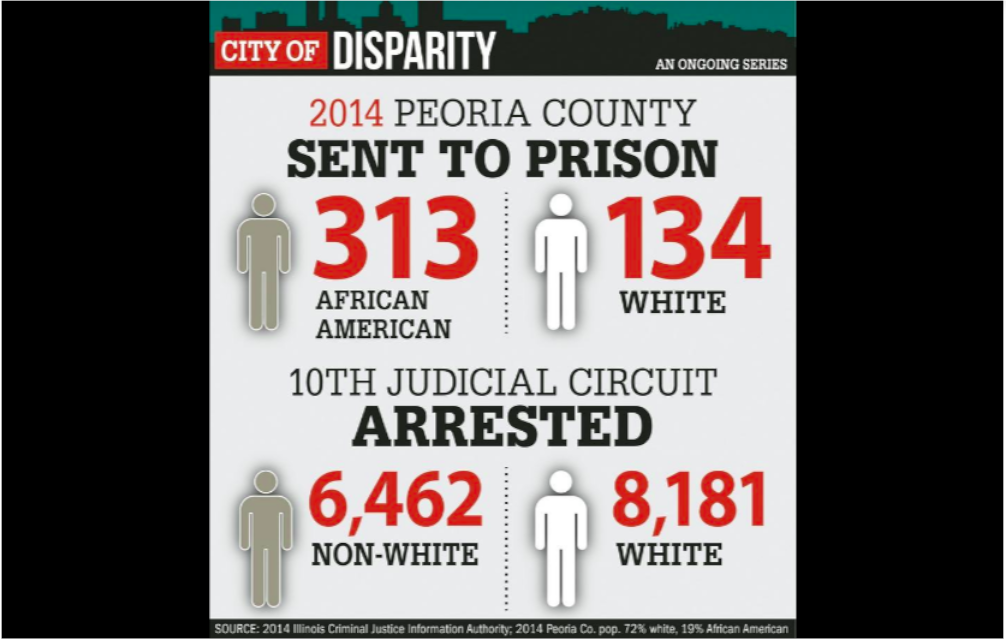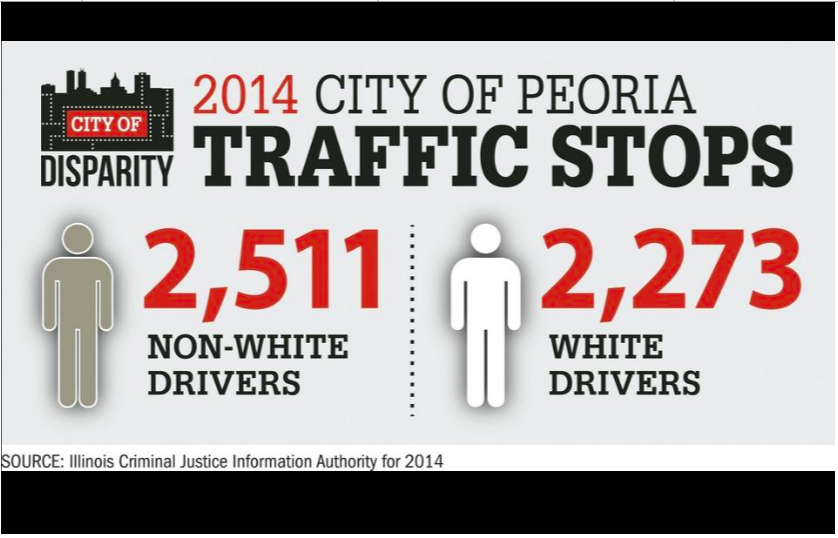Police are almost synonymous with oppression against people of color. Modern policing finds its origins in the slave patrols of the antebellum South after all… Back in the 1960s, Peoria had two kinds of justice: the official criminal justice dispensed through court and river justice. What’s river justice, you may ask? If you were someone the police didn’t like, they’d take you down to the Illinois river and just throw you in advising you of your right not return to Peoria.
. . .
Governing magazine points to a new tradition in Peoria around nuisance ordinances and the discriminatory ways the Peoria Police Department enforces the ordinance.
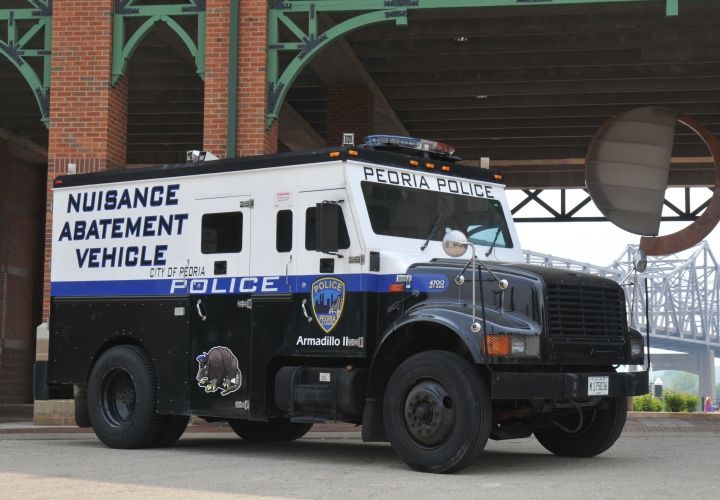
In Peoria, the police department calls the aging armored truck parked on the city’s southwest side an “armadillo.” The police see it as a symbol of law and order in neighborhoods that have had to endure chronic nuisances and frequent minor crimes. But fair housing advocates see the truck far differently: as a symbol of indiscriminate police power used disproportionately in black neighborhoods to kick people out of their homes…
Governing
But while the armadillos became symbols of smart policing in many circles, to fair housing advocates they became a symbol of something else: the discriminatory way that the city of Peoria responds to nuisance violations.
The Hope Fair Housing Center, a nonprofit group based in Chicago’s suburbs, sued the city of Peoria in 2017 over the way it handles nuisance violations. “The armadillos, like the nuisance ordinance, are deployed at the request of political officials and well-connected local residents rather than pursuant to objective criteria,” the group alleged in its lawsuit. “These deployments are made primarily in predominantly African-American neighborhoods…
The lawsuit claims that the police force doesn’t treat all alleged violators the same. The job falls to a small team within the police department, and it has few rules to follow and little oversight. In three years, the city issued just 148 nuisance citations, HOPE’s attorneys wrote, even though records of police calls indicate that as many as 12,000 properties could have been cited under the nuisance ordinance. More than 70 percent of the nuisance citations that the city did issue were in black neighborhoods, even though blacks made up only 27 percent of the [City of Peoria] population. A map included with the lawsuit shows that police posted armadillos almost exclusively in areas with significant black populations.
As in many African-American communities in the U.S., relations are particular fraught with the local police. Despite the black population being nearly 30% of the City’s population, only 14% of Peoria Police Officers are black…1
According to At-Large Councilmember Dr. Rita Ali, nearly 90% of PPD’s officers live outside the City of Peoria…
East Bluff Activist Jessie McGown Jr. says police officers are largely unwilling to participate in community events and most PPD officers have very little knowledge of the people living in the community or even what is happening in the community.2 McGown points to examples like former PPD officer Jeremy Layman. Layman posted several “controversial” Facebook posts, including an image of a shirt entitled “Baby Daddy Removal Team.” Layman was later terminated because of the posts but is currently suing the City of Peoria for wrongful termination.
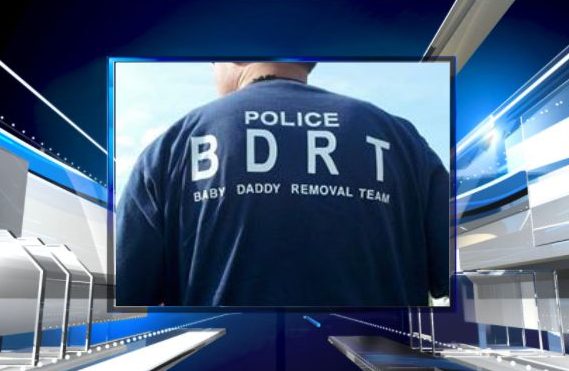
McGown also made the example of an unnamed police officer expressing relief that a black member of the community was murdered with McGown claiming the officer stated, “That’s another one we don’t have to worry about.” He says there is no trust from the black community towards the police and vice-versa. “The captains and chiefs are game [when it comes to spending time in the black community], but the rank-and-file will tell you in a heartbeat ‘they aren’t going to do that.’ I’ve been told that several times [by officers].”3
It’s not hard to see why many in the black community are particularly reticent when it comes to interacting and trusting PPD. Traffic stop data from 2014 shows PPD stopped 2,511 non-white drivers compared to 2,273 white drivers. Traffic stops are generally the most common way individuals interact with the law enforcement. It is well-known police officers often look for ways to pull a person over in what are referred to as pretext stops. Officers will use a pretext like a broken tail light or failure to signal as a pretext to stop a car and search it if possible, often with no probable cause available.
.
According to a 2016 study also entitled “Does Systemic Racism Play in Peoria,” performed by researchers at University of Illinois:
The data collected showed that traffic stop rates have throughout time had inconsistencies in regards to percent blacks being stopped compared to the population. These inconsistencies are not explained by zip code data, which shows that these inconsistencies remained true across all zip codes making up the city of Peoria. In addition, black people were more likely to be searched but less likely to have contraband on their person. And if they were found with drugs, it was less amount than typically found on white citizens. This disparity hits black males the most between 20 to 40 years of age.4
Another source of the division between police and the black community is PPD’s style of policing. Peoria started a much publicized “Don’t Shoot” Program based off the book Don’t Shoot: one man a street fellowship, and the end of violence in inner-city America by David M. Kennedy. The program is largely grounded in the Broken Windows Policing method which when “applied to police tactics, brings attention towards the removal of visible signs of social disorder,”5 though Kennedy denies any connection. According to internationally renowned sociologist & ethnologist Loïc Wacquant, broken windows policing “postulates that the immediate & stern repression of the slightest… nuisance on the streets stems the onset of major criminal offenses by (re)establishing a healthy climate of order.”6 Reasserting order with a draconian zeal will stem major crimes, the theory goes. PPD’s own description of the program from 2012 seems to correspond to this definition despite claims to the contrary:
It’s an aggressive multi-strategy anti-gang and anti-gun violence program designed to decrease shootings and get the most dangerous criminals off the streets… The centerpiece of the program is a focused deterrence strategy enhanced by an innovative community-wide education and outreach program crafted to thoroughly incorporate all segments of the citizenry of the Greater Peoria area. Using offender-based policing strategies, police and prosecutors send a specific message to a number of high-risk individuals that gun violence will not be tolerated.
But, over three decades of criminology data debunks the efficacy of Broken Windows Theory:7
“Studies show that the programs [of Broken Windows] do not work at all and claim that success headlines often use the decreasing crime rate as a sign that the program worked when in fact crime was decreasing before the program started. According to the Don’t Shoot program’s own data this may be the case for Peoria as well.”8
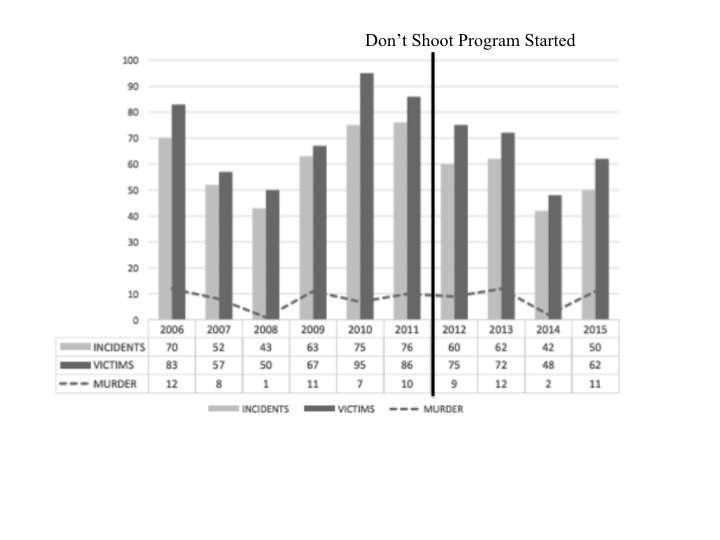
“Don’t Shoot” was started in 2012, two years after there was already a downward trend in shooting crime.
. . .
In prosecutions, black residents are clearly at a disproportionate disadvantage. According to NAACP member and journalist Sherry Cannon, “68.5% of all people sentenced to prison from Peoria County were Black, even though African Americans are only 19% of Peoria County.”9 Furthermore, “African Americans are 2.4% more likely to be respondents or defendants in every courtroom in Peoria County,” and black residents face more fines and fees from local government than any other jurisdiction in the nation save Ferguson, MO.10 Back in 2014, Peoria County sent 313 African-Americans to prison compared to 134 whites. At the same time, 6,642 non-whites were arrested in Peoria County, compared to 8,181 whites. Remember, blacks make up less than 20% of the county’s residents, while whites are 73%.
. . .
Beyond the raw statistics, there are striking examples of the differences in the way whites and blacks are treated for alleged crimes by the Peoria County States Attorney and PPD:
In 2013, a 17-year old Yunek Moore was brutally assaulted by PPD at a graduation party. There were no drugs or alcohol present, but the police responded to noise complaints from neighbors. Yunek had just graduated Peoria High School. She was president of her class, college-bound, and a National Honor Role member. She is also African-American:
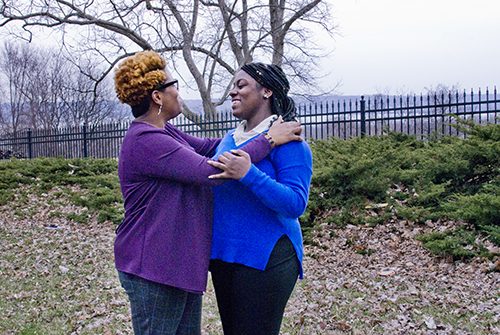
“Recounting the evening of the arrest, Yunek said someone shone a flashlight in her eyes and demanded her ID. She asked why. She thought someone was joking with her. The same demand was made again, and she responded the same way. Others at the party that evening confirmed the police did not identify themselves.”11
When the unidentified police–essentially trespassing on private property at this point–didn’t get the response they wanted, they proceeded to escalate with violence. “According to three witnesses, Yunek was yanked from her seat, dragged from the backyard with a twisted wrist technique and slammed into a garage wall.”12 She was arrested and taken to Peoria County Jail under spurious charges of resisting arrest. She was found guilty after a bench trial and placed on 12 months of court supervision. The injuries sustained were serious enough that Yunek had to have multiple surgeries costing her over $113,000 in medical expenses. Yunek has tried twice unsuccessfully to get accountability from the City of Peoria. Both times, juries were deadlocked in civil trial. The city has yet to take personal responsibility for their actions.
But, when it was a white man who fell victim to the authoritarian/triggered sentiments of Mayor Ardis (during the infamous #TwitterGate scandal), the city eventually shelled out a half-million settlement (and rightfully so).
. . .
Sherry Cannon recounts the circumstances of Amanda J. Boyer. During the infamous polar vortex in January 2019, Boyer was driving down Farmington Road when she fatally struck pedestrian John I. Lackey. Boyer fled the scene but was eventually arrested and ultimately plead guilty; she faced up to fifteen years in prison. Boyer ended up being sentenced to less than three months. “Judge Kevin Lyons sentenced her to 75 days in the county jail. His explanation for not giving her a harsher sentence was, “she is not penitentiary material”.”13 Cannon asks, “Who is penitentiary material?”
Yet, the same Kevin Lyons, when he was States Attorney for Peoria County14 charged a 15 year old boy, Dione Alexander, with aggravated battery with a firearm and received a conviction of 24 years. Despite shooting at a specific student Dione had feuded with in the past and shooting into a crowded hallway at Woodruff High School, no one was killed or injured in the incident.15 The 3rd appellate court of Illinois overturned the ruling saying it left no room for rehabilitation efforts considering Dione was a juvenile at the time. He was later released after serving 6 years in prison. Kevin Lyons threatened to appeal the ruling.
. . .
In another instance of Peoria justice, Brock Ardis, a white man and the nephew of Peoria’s mayor, Jim Ardis, shot up Crusens bar on Farmington, hitting “an individual in the shoulder and hand,” essentially committing attempted murder, yet “the charges were reduced, by the Peoria County States Attorney [Jerry Brady], from aggravated battery to reckless firing of a handgun, allowing him to avoid penitentiary time.”16 Brock Ardis was noted to comment under Facebook posts regarding this incident.

. . .
Currently, a 14-year old boy, Zaveon Marks, is facing multiple first degree murder charges in adult court for the death of 16-year old Zarious Fair. Zaveon allegedly murdered Zarious after a failed armed robbery. The question of whether to charge Zaveon as an adult or not reached the court system several times. Juvenile Court Judge Judge Frank Ierulli said “that he found no reason to keep Zaveon Mark’s case within the juvenile system, and that he didn’t think the boy was a “naive young man.””17 Furthernore, Judge Ierulli, said “This kid is street smart and savvy, he knows what to do and when to do it.”18 The judge even went so far as to recognize the boy’s poise, saying the child could clearly control his actions, with the implication seeming to be he acted more mature than the average 14-year old child.19 This despite a great deal of research showing that the brains of juveniles are significantly underdeveloped compared to adults, reducing the culpability of juveniles who commit such crimes.20 (This is certainly not to claim that juveniles should not be punished for serious crimes. If Zaveon is found guilty, he should be punished but the focus should be on rehabilitation and the requirement he pay significant restitution to Zarious Fair’s family. You can read my article about this case here.)

. . .
In April of 2019, a woman named Tina Gray was at a storage unit on Farmington Road. Shortly after arriving, an elderly white man named Jack Anderson showed up on the scene. He quickly began harassing Tina, commanding her to leave, and calling her a “nigger bitch.” Mz. Gray responded she wasn’t going anywhere. It was then that Anderson pulled out a knife and started swinging at Mz. Gray stating, “I’ve killed 6 nigger bitches; are you going to be my 7th?” Gray fled and called the police. But, Anderson chased after her with his knife forcing Gray to pick up a rock and defend herself. Police arrived and arrested Jack Anderson.21 Anderson was booked in Peoria County Jail under charges of assault, unlawful use of a weapon, and a hate crime. He was later released on a $100 bond.
This incident would have seemed a prime case for Federal Hate crime statute. Not just that, he could have easily been charged with attempted murder as he essentially said he was going to murder Mz. Gray. The man claimed to have murdered 6 other black women after all. According to Mz. Gray both the Peoria Sheriff’s office and the Peoria State’s attorney refused to investigate allegations of other murders because Anderson was “a lying old man; he didn’t know what he was talking about.” At the same time, prosecutor Steve Pattelli gave a rather lackluster argument on why Anderson should be sent to federal court for hate crime charges pointing out the facts Anderson is a 70 yo Veteran, Purple Heart recipient, who doesn’t have any priors (he had been arrested in 2012 for another violent crime). President of the ACLU of Peoria, Spanky Edwards, had this to say about the situation:
“You tell me, does that sound like a defense argument? He had no intention on seeing Anderson behind bars! This is what happens when the judge, the defendant, the defense attorney and the State’s Attorney are all White males and the victim is Black! I honestly didn’t believe it was this bad until I saw it with own eyes!”22
Not only was Anderson not transferred to federal court, but he was ultimately transferred to Veteran’s Problem-Solving Court (a court I didn’t even know existed until researching this case). Anderson ultimately plead guilty and was sentenced to 220 hours of community service and 18 months court supervision. Because he received court supervision, his court records will be expunged upon the successful completion of his sentence. When the Illinois legislature passed a law creating Veteran’s Problem-Solving Court, it recognized that some veterans “may suffer the effects of, including but not limited to, post traumatic stress disorder, traumatic brain injury, depression and may also suffer drug and alcohol dependency or addiction and co-occurring mental illness and substance abuse problems” and because of these issues may come in contact with the criminal justice system. But Jack Anderson’s crime has little to do with mental health, because racism is not a mental health issue. It’s simply not valid to dismiss blatant and violent racist behavior as some quirk of the brain.
Mz. Gray told me, “I was railroaded I didn’t have any help to fight for me. Judge was a Veteran, State Attorney was a Veteran, I didn’t stand a chance!!!!!” She told the media, “I fear that he’s out, he’s about in the community, in Peoria, it’s unsafe.” She has attempted to take Anderson to civil court but says she can’t find anyone to represent her.
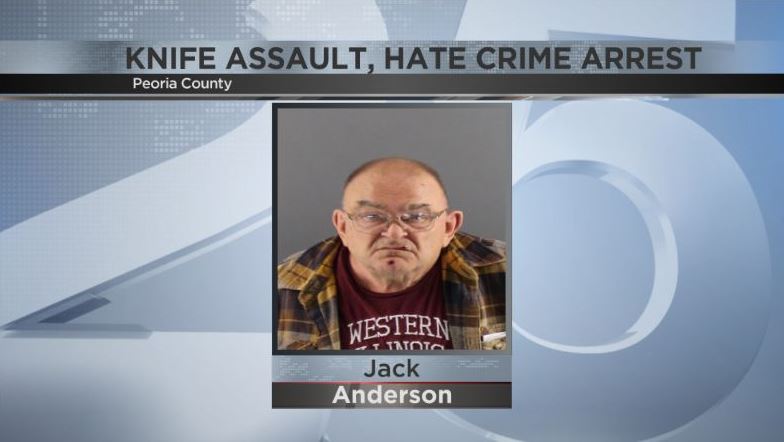
. . .
Even I was involved in an incident that questioned the racist tendencies of Peoria’s criminal justice system. In May of 2018, I was brutally assaulted by a violent white supremacist biker sporting a Confederate Flag on his leather jacket at the Circle K in the East Bluff. When I calmly informed him the Confederates were traitors, losers, and racists, Ralph Verneal Martin23 proceeded to strangle me. Faced with no other choice, I was forced to defend myself knocking Martin flat on the concrete (I’m normally a pacifist, but when forced to defend myself, I’m reluctantly willing to pass-a-fist). Yet, when PPD arrived on the scene, they arrested me and charged me with battery. Instead of doing a mere five minutes of investigatory work and actually reviewing the video tape from the gas station,24 PPD took the word of a gang of white supremacists. I had at least one witness who spoke in my defense. His testimony was not recorded in the incident report, and the witness stated the police & white supremacist bikers were very “buddy, buddy.”

The insanity doesn’t end there. When Peoria State’s Attorney Jerry Brady reviewed the case, he decided to double down and charge me with a felony. When I went in front of Judge Lyons (yes, the same Lyons as above), he refused to grant me my 6th amendment right to an attorney despite my indigence because of a disability. I was forced to spend several thousand dollars on an attorney (a feat I was only able to accomplish through the extremely generous donations of my many supporters). Months after the initial incident, the States Attorney finally bothered to do their job and review the video tape from the gas station. All charges were quickly dropped. Who knows how much money Peoria county wasted pursuing bogus charges and protecting violent white supremacists.
. . .
After examples like the above, it’s worth asking just what the hell is going on at the Peoria County State’s Attorney office. I’m reticent to call people with unconscious racial biases white supremacists (I didn’t even think Beth Akeson was a white supremacist despite her problematic beliefs), but I’m seriously beginning to wonder the allegiances of the those at the State’s Attorneys office. There are very few people of color currently working at the state’s attorney’s office, and according to Peoria State’s Attorney candidate Chris McCall (whose interview will appear in part 4 of this series), many lawyers of color have left the Peoria State’s Attorney office because of “lack of opportunities”. Without a doubt, there are serious and very real issues of racial inequity at the State’s Attorney’s office under both Jerry Brady and Kevin Lyons; inequities the office has been largely unwilling to address.
In Part 3, we will examine immigration and the influence of xenophobia in systemic racism in Peoria.
For more Fragments on Playing in Peoria, see here.
